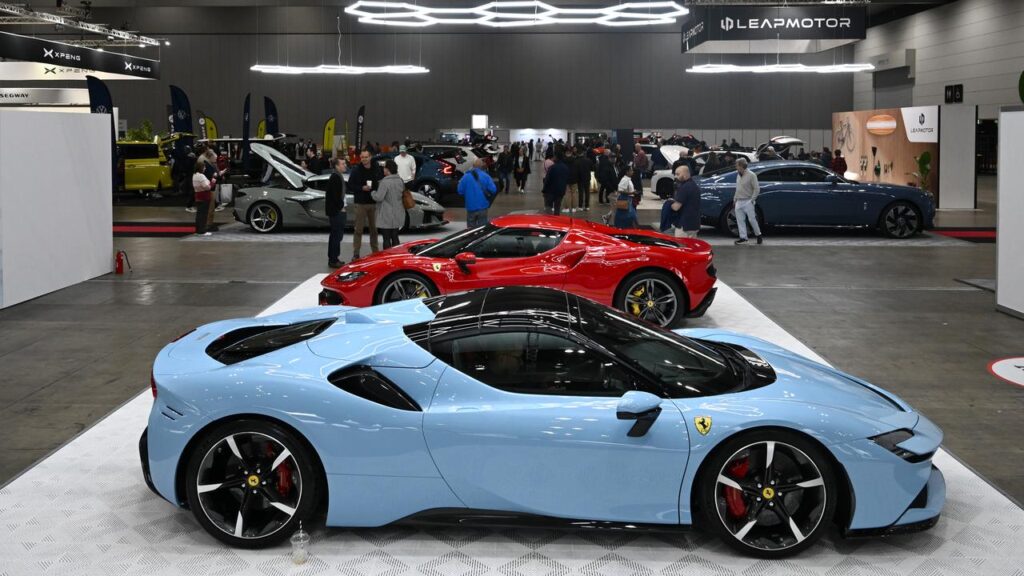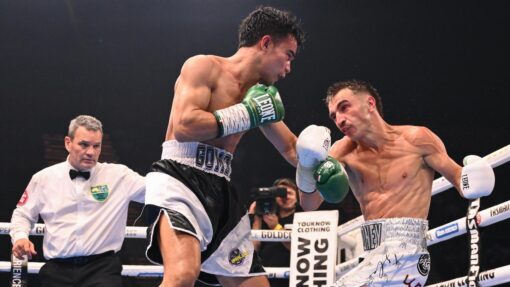More EVs, fewer V8s: changes coming for Aussie drivers
Jennifer Dudley-Nicholson |

A hybrid Lamborghini, an electric Rolls Royce, a convoy of low-emission people-movers and a rumble of battery-powered utes “that can actually tow things” will greet thousands of attendees to Australia’s latest motor show.
More than 100 electric and hybrid vehicles are on display at the Melbourne EV Show over the weekend which, Future Drive Auto chief executive Ray Evans says, has become significantly easier to organise in Australia’s evolving automotive market.
“The changes are certainly happening fast and in the third year it takes on a different dynamic,” he says.
“Before we had very limited product available – obviously Tesla and BYD and a few others – but that’s escalated to a point where next year there are 70 new (electric) models going to be released in Australia.”

In addition to more powerful electrified utes, the show has introduced low-emission luxury sports cars for the first time and Mr Evans says he expects healthy queues to form around lower priced EVs from Chinese brands such as XPENG, Leapmotor and Zeekr.
Industry experts say the packed event and others like it planned for this year demonstrate Australia’s transport policies are having an impact and changing the future make-up of our roads.
That effect is expected to intensify next month when penalties begin under the federal government’s New Vehicle Efficiency Standard that sets emissions limits for manufacturers.
More electric cars are scheduled to launch and some petrol and diesel vehicles may be removed from sale, although debate continues over whether motorists are ready for the changes.
For Electric Vehicle Council chief executive Julie Delvecchio, the arrival of penalties under the standard is “where the rubber hits the road” and consumers will be able to see what the rules deliver.
The standard, introduced in January, sets yearly emission limits for new vehicle fleets that manufacturers must meet or trade credits or pay penalties to achieve.
Brands must register new vehicles with the government from July to begin tracking emission levels, with a goal of reaching no more than 141 grams of carbon dioxide per kilometre for passenger vehicles and 210 grams per km for light goods vehicles this year.
Car companies that exceed these limits will have two years to address shortfalls before penalties are collected.

Having fines embedded into the scheme is important for enforcement, Ms Delvecchio says, even though brands are expected to avoid them by selling more advanced, low-emission transport options.
“The first of July is an important turning point for clean energy and clean transport in Australia: it’s when the (standard) gets its teeth and we see the enforcement power that has been signalled for a long time,” she says.
“Prior to (the standard) compared to today, we have double the number of electric car models which is exactly what it’s there to do.”
Consumers can expect to see electric vehicles that have only been available overseas until now and the replacement of some petrol and diesel vehicles with hybrid equivalents.
Australia’s top-selling car maker Toyota, for example, announced it would end sales of petrol vehicles in Australia where it produced a hybrid variant.
“Manufacturers have known that it’s coming and are adjusting, and they have to because Australia is really just falling in line with the rest of the world,” Ms Delvecchio tells AAP.
Similarly, Nissan says it will bring its Ariya electric SUV to Australia to coincide with the rules.

These types of changes will lower the nation’s transport emissions, Australian Electric Vehicle Association national president Chris Jones says, and shows manufacturers can make the rules work.
“It’s an indication they’re starting to finally realise the homework is due,” he says.
“The companies that have done their homework are sitting pretty and those who haven’t, despite their best efforts to get a reprieve, are going to get caught short.”
Popular brands such as Hyundai and Kia will be well placed to meet emission limits, Dr Jones says, although others, such as Isuzu, Mitsubishi and Mazda, with fewer low-emission options will need to make bigger changes.
Those reforms could involve removing high-polluting vehicles from sale.
“The fact car sellers are saying things like we’re going to have to offer fewer petrol and diesel vehicles, well, that’s one way to do it,” he says.
“You can’t say they weren’t warned.”
Several of Australia’s top-selling vehicles, such as the Toyota RAV4 and Ford Ranger, already fall under this year’s emission caps and Federal Chamber of Automotive Industries chief executive Tony Weber says brands have worked hard to make that possible.

The next hurdle for the local automotive industry may not be with the supply of electric vehicles, he warns, but with demand for them.
“The concern we have is that consumers are not changing their behaviour and there’s not the demand like we expected for low-emission vehicles,” he says.
“We’re already seeing cars being removed from the market – that’s been well documented – and unless there is a change in the behaviour of consumers there are going to be penalties.”
While sales of new hybrid vehicles have risen strongly in Australia this year, electric car sales rose modestly to represent nine per cent of all vehicles in May.
The chamber had predicted EVs would make up 14 per cent of the market, Mr Weber says, and its members would like to see greater infrastructure investments and financial incentives from federal, state and territory governments to back up the new standard.
“The government has put in a very stringent rule, wants consumers to quickly move and change their behaviour dramatically, but they’re not prepared to subsidise it,” he says.
“They’ve got to play a role.”
AAP


